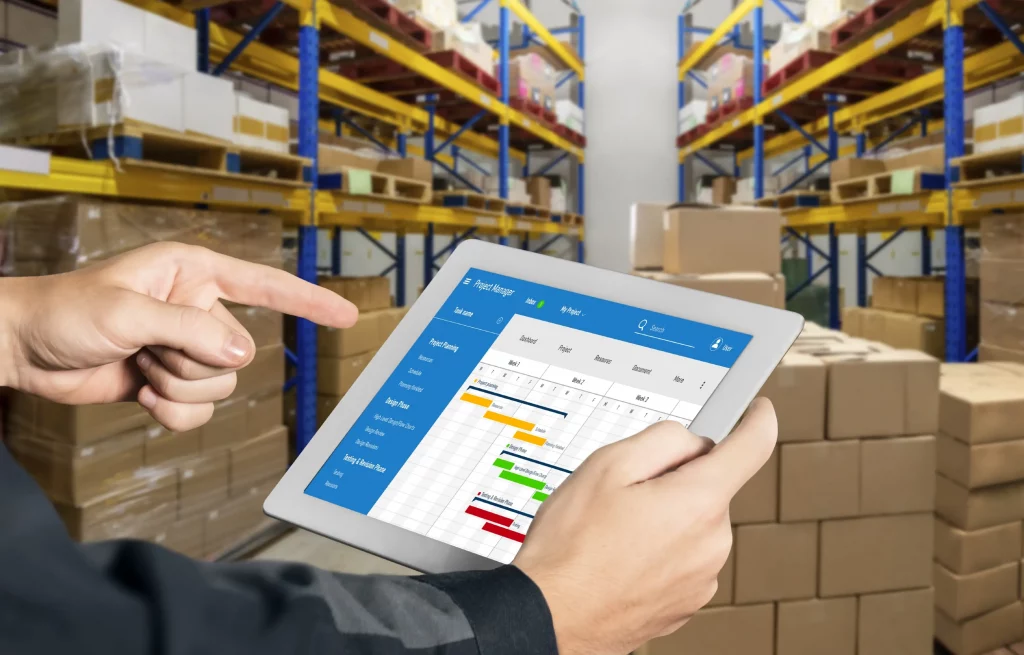How to Handle Inventory Management in E-commerce is essential for online businesses that want to thrive in a competitive market. Effective inventory management not only ensures that products are available when customers want them but also plays a crucial role in maintaining customer satisfaction and optimizing sales. With the right strategies and tools, e-commerce businesses can avoid the pitfalls of poor inventory management, which can lead to stockouts or excess inventory, both of which can negatively impact financial performance.
In this discussion, we will explore various inventory management systems, tracking methods, and forecasting techniques, all of which contribute to creating a seamless inventory process. We will also look at the importance of integrating these systems with popular e-commerce platforms, managing seasonal fluctuations, and employing technology to enhance efficiency.
Importance of Inventory Management in E-commerce
Effective inventory management serves as the backbone of any successful e-commerce business. With online shopping on the rise, maintaining a well-organized inventory system is crucial for meeting customer demands and maximizing sales opportunities. A robust inventory management strategy not only streamlines operations but also enhances customer experiences, ultimately leading to better retention and loyalty.Ineffective inventory management can lead to a series of adverse outcomes for an online retailer.
For instance, stockouts can result in lost sales, while overstock can tie up capital in unsold goods. Both scenarios negatively impact customer satisfaction, as consumers expect timely delivery of products. In today’s fast-paced e-commerce environment, a business’s inability to fulfill orders promptly can tarnish its reputation and lead customers to seek alternatives.
Impact of Poor Inventory Management on Customer Satisfaction
Understanding the ramifications of poor inventory management is essential for e-commerce retailers. A few of the most significant consequences include:
Decreased Customer Loyalty
Customers are likely to abandon a brand after experiencing stockouts or delays in shipping.
Negative Reviews
Unsatisfied customers often share their experiences online, damaging the brand’s reputation.
Increased Return Rates
Overstocking can lead to discounting, which may result in higher return rates if customers are dissatisfied with their purchases.The significance of these factors cannot be overstated. A single negative experience can deter a customer from returning, prompting businesses to invest heavily in marketing to attract new customers instead of retaining existing ones.
Key Metrics to Evaluate Inventory Performance in E-commerce
To effectively monitor inventory management, e-commerce businesses should focus on key performance metrics that provide insights into their operational efficiency. Some vital metrics to consider are:
Inventory Turnover Ratio
This measures how often inventory is sold and replaced over a specific period. A higher ratio indicates efficient inventory management.
Stockout Rate
This metric tracks the frequency of stockouts, highlighting potential issues in inventory planning.
Average Days to Sell Inventory
This indicates how long it takes to sell items once they are stocked, helping businesses understand demand and optimize stocking levels.By analyzing these metrics, e-commerce businesses can make informed decisions to enhance their inventory strategies, ensuring they meet customer needs while maintaining operational efficiency.
“Effective inventory management is the key to maximizing sales opportunities and enhancing customer satisfaction.”
Types of Inventory Management Systems: How To Handle Inventory Management In E-commerce
Inventory management is a crucial aspect of e-commerce that directly impacts customer satisfaction and operational efficiency. Different systems cater to various business needs, allowing companies to choose a solution that aligns with their operational scale and complexity. By understanding the available inventory management systems, e-commerce businesses can enhance their inventory practices, ultimately leading to improved profitability and customer experience.
Overview of Inventory Management Systems
There are several types of inventory management systems that e-commerce businesses can consider. These systems are designed to streamline stock management, reduce carrying costs, and optimize order fulfillment processes. Below are the primary types of inventory management systems available:
- Manual Inventory Management: This traditional approach involves tracking inventory through spreadsheets or paper-based methods. While it’s low-cost, it can lead to errors and inefficiencies, especially as the business grows.
- Spreadsheet-Based Systems: Utilizing programs like Excel, businesses can manage inventory with more structure than manual methods. However, scalability and real-time tracking remain challenges as inventory levels rise.
- Cloud-Based Inventory Management: These systems store data on the cloud, enabling real-time updates and access from any location. They are scalable and often include integrations with other e-commerce tools.
- On-Premise Inventory Management: Installed directly on a company’s servers, these solutions provide complete control over data. However, they require more upfront investment and maintenance costs.
- Automated Inventory Management Systems: These advanced systems use algorithms and AI to track inventory levels, predict demand, and reorder stock automatically. They are particularly beneficial for larger operations.
Comparison of Cloud-Based and On-Premise Solutions
Both cloud-based and on-premise inventory management solutions have distinct advantages and drawbacks. Understanding these differences can help businesses make informed decisions about which system best suits their needs.Cloud-based solutions offer flexibility, allowing users to access their inventory data from virtually anywhere with an internet connection. This can significantly enhance collaboration among team members and facilitate real-time updates. Additionally, cloud solutions often come with subscription models that reduce upfront costs.
However, businesses may face concerns about data security and reliance on internet connectivity.On-premise systems, while providing more control over data security and management, require substantial hardware and software investments. They may also have limitations in terms of accessibility, as users can only access the system from designated locations. Maintenance and updates can also become cumbersome and costly over time, particularly if the business scales.
Benefits of Automated Inventory Management Systems
Automated inventory management systems present numerous benefits that can help e-commerce businesses operate more efficiently. The integration of technology significantly reduces the likelihood of human error and streamlines processes, allowing staff to focus on more strategic tasks.
- Improved Accuracy: Automated systems minimize manual data entry, which decreases the chances of errors in inventory counts and order fulfillment.
- Time Savings: Automation significantly speeds up routine tasks such as stock counting, order processing, and inventory tracking.
- Real-Time Tracking: These systems provide real-time data on inventory levels, enabling businesses to make informed decisions promptly regarding stock management.
- Demand Forecasting: Advanced algorithms can analyze sales data to forecast future demand, helping businesses maintain optimal stock levels without excess inventory.
- Integration Capabilities: Automated systems often integrate seamlessly with other business tools, such as e-commerce platforms, accounting software, and supply chain management systems, creating a unified operational ecosystem.
Inventory Tracking Methods
In the dynamic world of e-commerce, effective inventory tracking is crucial for maintaining a smooth operation and meeting customer demands. Various tracking methods exist, each with its strengths and weaknesses, allowing businesses to choose one that aligns with their operational strategies and inventory nature.Understanding different inventory tracking methods can significantly improve efficiency and profitability. Key methods include FIFO (First In, First Out), LIFO (Last In, First Out), and JIT (Just In Time).
Each method influences how a company manages its stock, affects cash flow, and impacts financial reporting. Below, we delve into these methods in detail, exploring their applications and effectiveness in real-world scenarios.
FIFO, LIFO, and JIT Tracking Methods
The choice of inventory tracking method can greatly affect a business’s financial health and operational workflow. Here’s a deeper look at each method, along with examples that showcase their successful implementation.
| Method | Description | Example | Pros | Cons |
|---|---|---|---|---|
| FIFO | First In, First Out ensures that the oldest inventory items are sold first. | A grocery store using FIFO to sell perishable goods such as fruits and vegetables. |
|
|
| LIFO | Last In, First Out means that the newest inventory items are sold first. | A furniture retailer using LIFO for seasonal items like patio furniture. |
|
|
| JIT | Just In Time minimizes inventory by ordering goods only as they are needed. | An electronics manufacturer relying on JIT to receive components just before assembly. |
|
|
“Choosing the right inventory tracking method can streamline operations and enhance profitability.”
These methods, while distinct, can be tailored to fit various types of businesses, highlighting the importance of selecting the right approach based on specific operational needs and market conditions. By strategically implementing a suitable inventory tracking system, e-commerce businesses can achieve greater efficiency and customer satisfaction.
Inventory Forecasting Techniques
Effective inventory forecasting is crucial for e-commerce businesses to maintain optimal stock levels, reduce carrying costs, and meet customer demand without overstocking. Accurate forecasting helps in planning supply chain operations and can significantly enhance business efficiency and profitability.To forecast inventory needs accurately, businesses can utilize various techniques that leverage historical data, market trends, and sales patterns. These methods can help identify trends and predict future inventory requirements, ensuring that businesses are prepared for fluctuations in demand.
Role of Historical Sales Data in Inventory Forecasting
Historical sales data provides a foundation for understanding past performance and future demand. By analyzing this data, e-commerce businesses can refine their forecasting accuracy. Key points to consider include:
- Trend Analysis: Reviewing sales data over specific time periods can reveal seasonal trends, allowing businesses to prepare for peak seasons or slow periods effectively.
- Sales Patterns: Identifying recurring sales patterns can help predict future demand. For instance, if sales consistently rise during holidays or promotional events, businesses can plan accordingly.
- Customer Behavior: Monitoring customer buying habits can inform stock levels. For example, if a product often sells out shortly after restock, it indicates strong demand that should be accounted for in future orders.
Simple Forecasting Model for Small to Medium E-commerce Businesses
A straightforward forecasting model suitable for small to medium e-commerce businesses involves a combination of quantitative and qualitative analyses. Below is a recommended approach:
1. Collect Historical Sales Data Gather sales data for at least the past year, focusing on monthly or weekly figures to observe patterns more clearly.
2. Calculate Average Monthly Sales This can be done using the formula:
Average Monthly Sales = (Total Sales Over a Period) / (Number of Months)
For example, if total sales over 12 months equal 12,000 units, then average monthly sales would be 1,000 units.
3. Adjust for Seasonality If certain months are historically stronger, apply a seasonality factor. For instance, if sales in December are typically 30% higher than average, adjust the forecast for that month accordingly.
4. Account for Market Trends Stay informed about market trends that could influence sales, such as new product launches, economic changes, or competitor actions.
5. Create a Forecasting Spreadsheet Organize the data in a spreadsheet, inputting average sales, adjustments, and projected future sales for easy tracking and updates.By employing these techniques, small to medium e-commerce businesses can develop a reliable inventory forecasting model that aligns with their specific needs and challenges.
Managing Seasonal Inventory Fluctuations
Understanding how to manage inventory during seasonal fluctuations is crucial for e-commerce businesses. Seasonal changes can significantly affect consumer demand, and being proactive in inventory management can lead to maximized profits and minimized losses. With the right strategies, businesses can navigate through peak and off-peak seasons more effectively.Seasonal data analysis plays a vital role in adjusting inventory to meet changing customer needs.
By understanding historical sales patterns, businesses can anticipate demand spikes or drops and manage stock levels accordingly. Analyzing past season performance helps in making informed predictions, ensuring that the right products are available at the right time.
Strategies for Managing Seasonal Inventory
Implementing effective strategies to handle inventory during peak and off-peak seasons can greatly enhance operational efficiency. Here are key strategies to consider:
- Forecasting Demand: Use historical sales data to predict seasonal trends. For instance, if winter clothing sales increase significantly in November, plan to stock up on related inventory well in advance.
- Flexible Supply Chain Relationships: Develop strong partnerships with suppliers who can respond quickly to changing demands. This flexibility allows for rapid adjustments in stock based on real-time sales data.
- Inventory Buffering: Maintain a buffer stock during peak seasons. This extra inventory ensures that you can meet sudden increases in demand without running out of stock.
- Clearance Sales: Implement clearance strategies during off-peak seasons to reduce excess inventory. For example, after the holiday season, discounted sales can help clear out seasonal items efficiently.
- Utilizing Third-Party Warehousing: Consider using third-party logistics providers to manage excess inventory. This can be particularly useful during peak times when space and resources are constrained.
Importance of Seasonal Data Analysis
Seasonal data analysis is essential for making informed inventory adjustments. By analyzing sales data from previous seasons, businesses can identify trends and patterns that help in optimizing stock levels.
- Identifying Trends: Analyzing seasonal sales can reveal popular products and times of the year when demand spikes, allowing businesses to proactively stock up.
- Adjusting Inventory Levels: Based on past data, businesses can adjust inventory levels to prevent overstocking or stockouts, leading to cost savings and customer satisfaction.
- Timely Promotions: Seasonal data can inform marketing strategies, helping businesses plan timely promotions or discounts that align with customer purchasing behavior.
Tools for Managing Seasonal Fluctuations
Employing the right tools can streamline the process of managing seasonal inventory fluctuations effectively. Various software and tools are available that assist in tracking inventory changes and making quicker decisions.
- Inventory Management Software: Platforms like TradeGecko and Fishbowl offer robust tools for tracking inventory levels and trends, allowing for seamless adjustments during seasonal changes.
- Data Analytics Tools: Tools such as Google Analytics or Tableau can provide insights into customer behavior and sales trends, essential for informed decision-making.
- Demand Forecasting Tools: Software like Forecastly utilizes historical sales data to predict future demand, enabling better inventory planning.
- Point of Sale (POS) Systems: Modern POS systems can provide real-time sales data, helping businesses adjust inventory on the fly based on current sales trends.
Integrating Inventory Management with E-commerce Platforms
Integrating an inventory management system with e-commerce platforms is crucial for streamlining operations and ensuring that stock levels are accurately maintained. A seamless integration allows for real-time updates, minimizes errors, and enhances customer satisfaction by ensuring product availability. This section delves into how to effectively integrate these systems with popular e-commerce platforms, the challenges that may arise during this process, and how to set up the integration step-by-step.
Integration with Popular E-commerce Platforms
Integrating inventory management systems with e-commerce platforms such as Shopify, WooCommerce, and Magento can significantly enhance operational efficiency. The process typically involves several key steps, which include:
1. Selecting the Right Inventory Management System
Choose a system that is compatible with the e-commerce platform in terms of features and functionality. Popular options include TradeGecko, Cin7, and Skubana.
2. API Utilization for Integration
Many e-commerce platforms provide APIs that facilitate integration. Utilizing these APIs helps in connecting the inventory system directly with the e-commerce platform, allowing for data synchronization.
3. Real-time Data Synchronization
Ensure that both systems can share data in real-time. This means that any changes in inventory levels on one platform are instantly reflected on the other, preventing overselling and stock discrepancies.
4. Setting Up Automated Processes
Automate order fulfillment and stock replenishment processes. This reduces manual input and potential errors, increasing efficiency and reliability.
5. Testing the Integration
Before going live, conduct thorough testing to ensure that all aspects of the integration work seamlessly. Testing should cover order processing, inventory updates, and reporting functionalities.
6. Training Staff
Ensure that employees are trained on how to use the integrated system effectively to maximize its potential and minimize mishaps.
Challenges and Solutions During Integration
Integrating inventory management systems with e-commerce platforms can come with its set of challenges. Recognizing these hurdles and knowing how to overcome them is essential for a smooth transition. Common challenges include:
Data Inconsistencies
Mismatched data can lead to discrepancies in stock levels. Regular audits and reconciliations should be conducted to ensure data integrity.
Compatibility Issues
Sometimes, the chosen inventory management system may not fully support the e-commerce platform’s features. Researching compatibility beforehand can prevent these issues.
Technical Challenges
Technical difficulties can arise during the integration process. Seeking assistance from IT professionals or utilizing customer support from software providers can mitigate these problems.
Resistance to Change
Employees may resist using a new system due to comfort with existing processes. Providing comprehensive training and demonstrating the benefits can help ease this transition.
Step-by-Step Guide for Shopify Integration
To set up integration between an inventory management system and Shopify, follow these straightforward steps:
1. Choose an Inventory Management Solution
Select a system compatible with Shopify. For example, TradeGecko is known for its ease of use with Shopify.
2. Create Accounts
Set up accounts on both the inventory management system and Shopify if not already done.
3. Access API Credentials
Go to the Shopify admin panel, navigate to “Apps,” and then “Manage private apps” to generate API credentials.
4. Connect Systems via API
Use the API credentials to link your inventory management system with Shopify. This usually involves entering the API key and password in the inventory system settings.
5. Configure Sync Settings
Adjust settings in both systems to define what data will sync (e.g., stock levels, product details) and how often.
6. Run Test Orders
Create test orders to ensure that inventory levels update correctly and that there are no discrepancies in stock information.
7. Launch Integration
After successful testing, launch the integration and monitor the initial transactions closely to identify any lingering issues.
8. Regular Monitoring and Updates
Continuously monitor the integration to ensure it remains functional and adjust settings as needed based on changing business needs.By following these guidelines, businesses can effectively integrate their inventory management systems with their e-commerce platforms, leading to improved efficiency and customer satisfaction.
Inventory Auditing and Control
Maintaining a robust inventory auditing and control system is crucial for e-commerce businesses. Regular audits not only help ensure that the inventory on hand matches the records but also safeguard against losses and inefficiencies. Implementing effective inventory control measures can significantly impact a company’s financial health, enhancing profitability and operational efficiency.Regular inventory audits involve systematic checks and balances to verify stock levels and quality.
These audits help identify discrepancies between recorded and actual inventory, which can arise from various factors, including theft, damage, or clerical errors. By conducting these audits, e-commerce businesses can maintain accurate records, thus building a trustworthy operational foundation.
Methods to Conduct Regular Inventory Audits
There are several methods that e-commerce businesses can adopt for effective inventory auditing. These approaches focus on ensuring the accuracy of inventory records and minimizing discrepancies.
1. Cycle Counting
This method involves regularly counting a small subset of inventory items to maintain accuracy. By rotating the items counted, businesses avoid disrupting operations and can quickly identify discrepancies.
2. Annual Audits
A comprehensive annual audit is essential for a complete review of inventory. This approach allows businesses to reconcile their records with actual stock levels and assess overall inventory management practices.
3. Perpetual Inventory System
This system continuously updates inventory records in real-time with each transaction. This method provides an ongoing view of inventory levels, making discrepancies easier to spot and address.
4. Spot Checks
Conducting random spot checks on different inventory segments can help identify issues without the need for a full audit. This method is less disruptive and can be implemented alongside other auditing strategies.
Importance of Inventory Control
Effective inventory control is vital for maintaining the financial health of an e-commerce business. It directly influences cash flow, profitability, and customer satisfaction. By optimizing inventory levels, businesses can reduce holding costs and minimize waste. Furthermore, maintaining the right amount of stock ensures that customer demand is met without overstocking, which can tie up capital.
“Inventory control is not just about stock levels; it’s about understanding customer demand and positioning your products accordingly.”
Checklist for Thorough Inventory Auditing Processes
A well-structured checklist can streamline the auditing process and ensure comprehensive coverage. Here’s a useful checklist to follow:
- Verify inventory records against physical stock.
- Identify discrepancies and investigate their causes.
- Assess inventory turnover rates to gauge performance.
- Review supplier and customer returns for accuracy.
- Check for damaged or obsolete stock and plan for liquidation if necessary.
- Update inventory management systems with audit findings.
- Train staff on best practices for inventory handling and record-keeping.
- Schedule follow-up audits to ensure compliance with inventory protocols.
By utilizing these methods and maintaining a rigorous auditing checklist, e-commerce businesses can significantly improve their inventory management processes, leading to enhanced operational efficiency and better financial outcomes.
Technology in Inventory Management
In the fast-paced world of e-commerce, technology plays a pivotal role in streamlining inventory management processes. With the advancement of various software solutions, businesses can now manage their stock levels more efficiently, reduce errors, and improve overall productivity. The integration of technology not only saves time but also enhances decision-making capabilities through data-driven insights.The landscape of inventory management is continually evolving, with emerging technologies such as Artificial Intelligence (AI) and the Internet of Things (IoT) transforming how businesses operate.
These innovations enable retailers to optimize their inventory processes, ensuring that they can meet customer demand while minimizing excess stock.
Emerging Technologies in Inventory Management
The integration of AI and IoT into inventory management systems offers numerous advantages. These technologies facilitate real-time data tracking, predictive analysis, and automated decision-making, which are crucial for maintaining an efficient supply chain. Below are some key features of these technologies:
- Artificial Intelligence (AI): AI algorithms can analyze vast amounts of data to predict inventory needs, optimize stock levels, and identify trends in customer behavior.
- Internet of Things (IoT): IoT devices enable real-time monitoring of inventory levels and warehouse conditions, allowing businesses to respond swiftly to changes.
- Machine Learning: Machine learning models can improve forecasting accuracy by learning from historical sales data and adjusting predictions accordingly.
- Automation: Automated systems reduce manual labor and errors, allowing for quicker order processing and inventory updates.
The following table Artikels the features of some of the top inventory management software available in the market:
| Software | Key Features | Best For |
|---|---|---|
| TradeGecko | Multi-channel sales, inventory tracking, order management | Small to mid-sized businesses |
| Zoho Inventory | Inventory control, order management, multi-channel selling | Growing e-commerce companies |
| NetSuite ERP | Comprehensive ERP, inventory management, financials | Larger enterprises |
| Fishbowl | Manufacturing, warehouse management, integration with QuickBooks | Manufacturers and wholesalers |
| Skubana | Inventory management, order fulfillment, analytics | High-volume e-commerce businesses |
The continuous advancement of technology in inventory management not only improves operational efficiency but also provides a competitive edge in the ever-evolving e-commerce landscape. By leveraging these innovative solutions, businesses can ensure they remain agile and responsive to market demands.
Challenges in Inventory Management

E-commerce businesses face a myriad of challenges when it comes to managing inventory effectively. These challenges can significantly impact profitability, customer satisfaction, and overall operational efficiency. Identifying and addressing these challenges is crucial for maintaining a competitive edge in the fast-paced world of online retail.One common issue is dealing with stockouts, which can lead to lost sales and dissatisfied customers.
On the other hand, excess inventory ties up capital and increases holding costs. Both scenarios demand strategic solutions and proactive management techniques. To navigate these challenges successfully, e-commerce businesses can implement several strategies that have proven effective in the industry.
Common Inventory Management Challenges, How to Handle Inventory Management in E-commerce
Understanding the key challenges faced in inventory management can help e-commerce businesses devise appropriate strategies. Here are some of the prevalent issues:
- Stockouts: Running out of stock can result in missed sales opportunities and harm customer trust. Customers may turn to competitors if they can’t find the products they want.
- Excess Inventory: Holding too much inventory can lead to increased costs associated with storage and potential obsolescence of products.
- Demand Fluctuations: Sudden changes in consumer demand can create imbalances, making it challenging to maintain optimal inventory levels.
- Supply Chain Disruptions: Any hiccup in the supply chain, such as delays from suppliers or transportation issues, can affect inventory availability.
- Data Management: Inaccurate data can result in poor decision-making regarding stock levels and purchasing strategies.
Addressing these challenges requires a proactive approach. E-commerce companies often employ various techniques to manage their inventory more effectively.
Overcoming Stockouts and Excess Inventory
To tackle stockouts, e-commerce businesses should focus on improving demand forecasting and setting up safety stock levels. This involves analyzing past sales data, market trends, and seasonality to anticipate demand accurately. For example, retailers like Amazon utilize advanced algorithms to predict customer purchases, helping them maintain optimal stock levels.On the flip side, managing excess inventory can be achieved through various strategies.
Regular inventory audits help identify slow-moving products, allowing companies to implement markdowns or promotions to clear out excess stock. Additionally, businesses can enhance their inventory turnover ratio by employing just-in-time (JIT) inventory systems, which focus on ordering goods only as needed to meet current demand.
Successful Problem-Solving Techniques
Many e-commerce companies have developed creative solutions to address inventory management challenges. For instance, Zappos has been known for its exceptional customer service, which includes transparency regarding stock levels. By clearly communicating stock availability to customers, Zappos minimizes the risk of stockouts and enhances customer satisfaction.Another example is Warby Parker’s approach to inventory management, where they leverage data analytics to optimize stock levels across their various retail locations.
This data-driven approach allows them to respond swiftly to changes in demand, ensuring they have the right products available at the right time.
“Effective inventory management is not just about controlling stock levels; it’s about understanding and predicting customer behavior.”
Best Practices for Inventory Management
Effective inventory management is crucial for e-commerce businesses aiming to maintain optimal stock levels, minimize costs, and enhance customer satisfaction. By adhering to best practices, businesses can streamline their operations and respond swiftly to market demands.A well-organized inventory management process not only helps prevent stockouts and overstock situations but also supports the overall efficiency of the supply chain. Implementing key strategies can lead to significant improvements in accuracy and efficiency.
Below are essential best practices that e-commerce businesses should consider.
Maintaining Optimal Inventory Levels
To successfully maintain optimal inventory levels, it’s vital to balance supply and demand. Here are some best practices for achieving this balance:
- Regular Inventory Audits: Conduct frequent audits to assess stock levels and identify discrepancies. This practice helps in pinpointing items that are overstocked or understocked.
- Set Reorder Points: Establish reorder points for each product based on sales velocity. Automated alerts can help trigger reordering processes before stock runs out.
- Utilize Just-In-Time Inventory: Adopt a Just-In-Time (JIT) approach to keep inventory levels low, ensuring products are ordered only as needed to meet customer demand.
Effective Communication Between Inventory Management and Sales Teams
Strong communication between inventory management and sales teams is essential for accurate forecasting and efficient stock replenishment. Here are some strategies to enhance this collaboration:
- Daily Stand-Up Meetings: Encourage brief daily meetings where both teams can share insights about sales trends, inventory levels, and upcoming promotions.
- Shared Inventory Dashboards: Implement shared dashboards that provide real-time data on inventory levels, sales performance, and order statuses accessible to both teams.
- Collaborative Planning Sessions: Organize quarterly planning sessions to align sales forecasts with inventory capabilities, ensuring that both teams are on the same page regarding expected demand.
Designing an Infographic for the Inventory Management Process
An effective infographic can visually represent the inventory management process from ordering to fulfillment. Here’s what the infographic should include:
1. Ordering Stage
Suppliers and Purchase Orders.
Lead Times and Order Quantities.
2. Receiving Stage
Inspecting Deliveries.
Stocking Items in Warehouse.
3. Inventory Management Stage
Cataloging Products in Inventory Systems.
Tracking Stock Levels and Expiry Dates.
4. Fulfillment Stage
Picking and Packing Orders.
Shipping and Delivery to Customers.
5. Feedback Loop
Customer Feedback on Stock Availability.
Sales Data for Future Ordering Decisions.
The infographic should use clear icons and concise text to illustrate each step, making the process easy to understand at a glance. This visual representation enhances communication and provides a quick reference for teams involved in the inventory management process.





